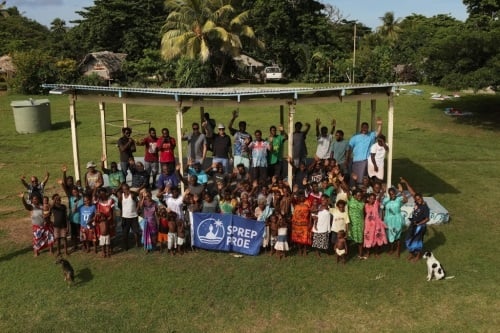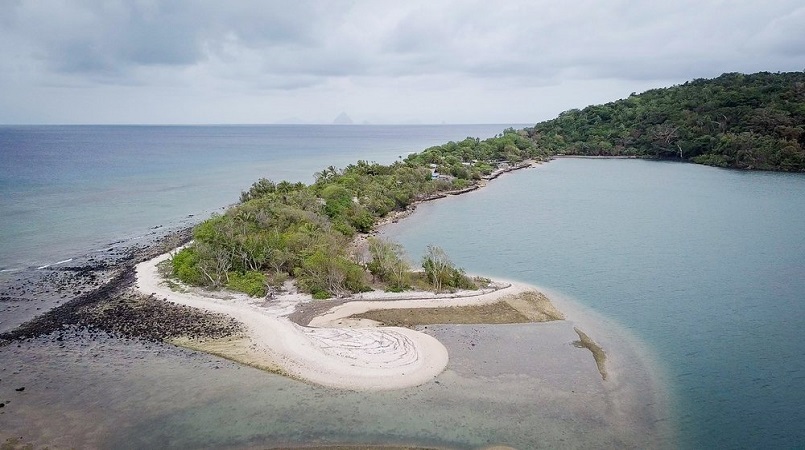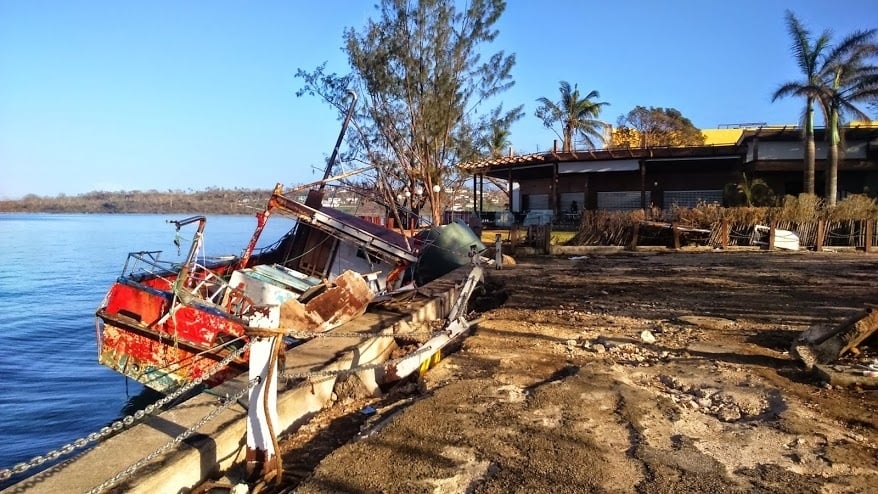Van-KIRAP is working with Vanuatu to upgrade Vanuatu’s designs to international climate-adjusted standards and build more climate-resilient infrastructure
Existing infrastructure in Vanuatu, such as bridges, culverts, and drainages, were built using old climate data and climatology from the past 30 years.
Due to the increasing impacts of climate change on Vanuatu’s climate, the current infrastructure is unable to accommodate for extreme rainfall and temperature, leading to the need to upgrade their designs to international climate-adjusted standards.
The Vanuatu Klaemet Infomesen blong Redy, Adapt mo Protekt (Van-KIRAP) project, a five year, USD$22 million project funded by the Green Climate Fund and implemented by the Secretariat of the Pacific Regional Environment (SPREP) and partners, is working with the Government of Vanuatu to build the capacity of its infrastructure sector, particularly its Public Works Department (PWD) to enable them to design and build more climate resilient infrastructure.
Sunny Seuseu, Acting Project Manager for Van-KIRAP, says, “We are supporting PWD in two ways – by updating their Vanuatu Road Resilience Guide to include new climate data and climate change projections, so that when the engineers are designing new infrastructure, they are using new climate data that take into account future climate risks.”
Group picture of Tanna community
The second way is through the use of LiDAR, a high resolution mapping capability that allows PWD engineers to accurately depict the catchment area that feeds into bridges and such infrastructure.
“In order to design more resilient infrastructure, you need to have a better understanding of the catchments, the climate and the surrounding environment,” Mr Seuseu says.
The project purchased a new LiDAR drone to assist the PWD team in the collection of this environmental data, which, when integrated into engineering designs with climate information and projections, will result in more resilient infrastructure that can withstand future extreme weather hazards.
A recent LiDAR mapping and data collection was conducted on the island of Tanna, in partnership with CSIRO, VMGD, the Department of Tourism and the Department for Infrastructure. It was conducted for community infrastructure that are focused on tourism and agriculture. The new information collected through the LiDAR aerial surveys will allow for risk assessments for tourism infrastructure and port resolution as well as residential houses and the wider community.
Raviky Talae of the Department of Infrastructure, says the support from the Van-KIRAP project through the use of the LiDAR drone to conduct mapping and surveying is extremely useful for the infrastructure sector.
“The advanced imaging capabilities allow for more efficient inspection, surveying, and monitoring of infrastructure, which can ultimately improve safety and reduce costs,” Talae says.
Similar surveys using the LiDAR drone have also been completed in Lonnoc Beach and Champagne Beach on the island of Santo, and will also be conducted in Waialo and Maniao as part of Van-KIRAP’s continuing assistance and support to the PWD and the infrastructure sector.
The Vanuatu Klaement Infomesen blong Redy, Adapt mo Protekt (Van-KIRAP) project is a five-year, USD 22 million project which aims to support climate resilient development in Vanuatu through the development, communication, and application of climate information services for agriculture, fisheries, infrastructure, tourism, water sectors and communities. It is funded by the Green Climate Fund and implemented by the Secretariat of the Pacific Regional Environment Programme in partnership with the Vanuatu Meteorology and Geo-hazards Department, Commonwealth Scientific and Industrial Research Organisation, Australian Bureau of Meteorology, and APEC Climate Centre.
This story was published at SPREP on 13 April 2023, reposted via PACNEWS.




